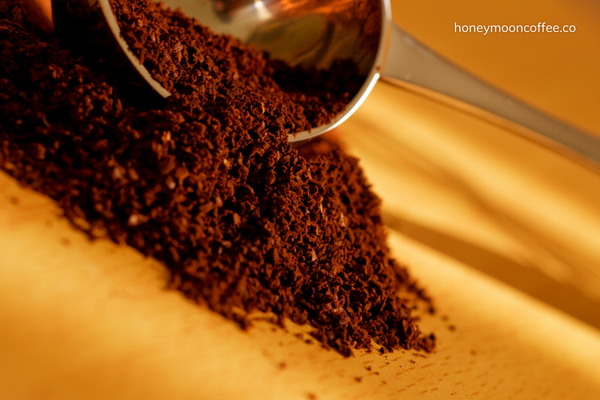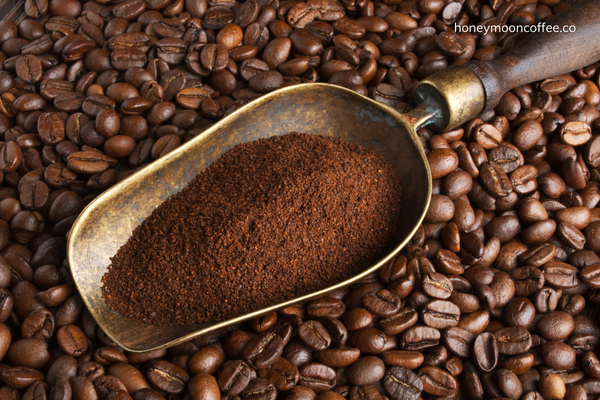Are you tired of your coffee turning out too weak or too strong? When it comes to brewing the perfect pot of coffee, getting the right ratio of coffee to water is essential. In this article, we will answer the commonly asked question, “How many scoops of coffee for 12 cups?” We’ll explore the factors that can affect the measurement, such as personal preference, coffee bean type, and brewing method. Whether you prefer a bolder or milder brew, stay tuned for our expert tips on achieving the ideal flavor and strength for your 12-cup coffee pot.
What is the Standard Measurement for 1 Cup of Coffee?
The standard measurement for 1 cup of coffee is usually 2 tablespoons, or roughly 10 grams. This amount should be adjusted depending on the type and grind of your coffee, as well as your preferred strength.
How Many Scoops of Coffee for 12 Cups?

When brewing a large batch of coffee for 12 cups, the standard measurement is 24 tablespoons, or 120 grams. Of course, you can adjust this amount to suit your own individual taste but we recommend starting with this ratio as a baseline and then adjusting accordingly.
For those who prefer stronger coffee, consider increasing the amount of grounds slightly – for example, increasing the amount to 25 tablespoons (or 125 grams). If you’re looking for a lighter cup of coffee, reduce the grounds slightly – such as using 23 tablespoons (or 115 grams).
Remember that practice makes perfect and don’t be afraid to experiment with different ratios until you find one that’s just right. You might be surprised at how much of a difference even a small adjustment can make in the flavour of your coffee. And with the right ratio, you’ll soon have 12 perfect cups of coffee ready to enjoy!
How Many Scoops of Coffee for 12 Cups in Different Different Brewing Methods?
There are many different brewing methods for coffee, and each one requires a different amount of coffee. For 12 cups of coffee, you will need:
| Brew Method | Scoops (1 scoops= 10 grams) |
| French Press | 8-12 |
| Espresso Machine | 6-8 |
| Pour Over | 8-10 |
| Cold Brew | 18-20 |
| Moka Pot: 4-6 scoops | 4-6 |
| Aeropress: 2-3 scoops | 2-3 |
| Drip Coffee | 12-24 |
No matter which brewing method you choose, it’s important to measure your scoops of coffee accurately in order to get the best possible cup. It may take a bit of trial and error to find the perfect ratio for your tastes but with practice, you’ll be able to dial in the perfect cup of coffee!
The key takeaway here is this – always use a consistent scoop size and weight for all your brewing methods, and adjust your measurements accordingly. Following these guidelines will ensure that you have the best possible cup of coffee every time.
How to Measure Coffee Grounds for the Desired Strength?

Measuring coffee grounds is essential for making the perfect cup of coffee. The amount of coffee you use will determine the strength of your brew. If you want a strong cup of coffee, you’ll need to use more grounds. For a weaker cup, you’ll need to use less.
To measure your desired strength, use the following formula:
Number of scoops = (Desired strength in ounces) x (6/5)
For example, if you want to make 12 cups of medium-strength coffee, you would need 24 scoops (12 ounces x 6/5 = 24 scoops).
There are a few different ways to measure coffee grounds. You can use a standard measuring spoon, like a tablespoon or teaspoon. Or, you can invest in a coffee scoop, which is specifically designed for measuring coffee grounds.
When using a standard measuring spoon, keep in mind that one tablespoon is equivalent to three teaspoons. So, if you’re using a tablespoon to measure your grounds, you’ll need to use three times as much as you would if you were using a teaspoon.
Coffee scoops are available in various sizes, so it’s important to choose one that matches the amount of coffee you want to make. A standard scoop holds two tablespoons of coffee grounds, which is the same as six teaspoons. If you want to make a strong cup of coffee, use a full scoop of grounds. For a weaker brew, use half a scoop.
No matter which method you choose for measuring your coffee grounds, be sure to be consistent with the amount you use each time. This will help ensure that your cups of coffee are always the same strength and flavor. Plus, it will save you time and hassle in the long run.
Tips for Measuring Coffee Grounds:
1. Use a consistent measuring tool each time you make coffee – either a standard spoon or a coffee scoop.
2. Measure the desired amount of grounds and then transfer to your filter or espresso machine basket. This will help you avoid over-measuring or under-measuring, which can affect the flavor of your coffee.
3. If you’re using a standard measuring spoon, remember that one tablespoon is equivalent to three teaspoons.
4. Experiment with different measurements until you find the strength and flavor that’s just right for you.
5. Store any leftover grounds in an airtight container in a cool, dry place. This will help ensure that the grounds remain fresh for your next cup.
Grind size of Coffee Beans Should be Used for 12 Cups?
Once you’ve chosen the roast level, it’s time to choose a grind size for your coffee beans. The size of the grind has a major impact on the flavor and strength of your final cup. A finer grind will result in a stronger cup of coffee, while coarser grounds are best suited for those who prefer a milder brew.
Extra-Fine grind
An extra-fine grind is best suited for espresso or Turkish coffee. The extremely small grounds result in a strong and intense cup of coffee with a smooth, creamy texture. It’s also the quickest way to make coffee, since it only needs to be brewed for about 30 seconds.
Fine grind
A fine grind is best suited for drip coffee makers or traditional French presses. The small grounds allow the hot water to extract more flavor from the beans, resulting in a bold and flavorful cup of coffee. Just be sure to use a finer filter paper if you’re using a drip machine to avoid over-extraction.
Medium grind
A medium grind is perfect for stovetop espresso makers or Aeropress. It allows the hot water to extract a balanced cup of coffee with a slightly bolder flavor than finer grounds. Just be sure to use an extra-fine paper filter if you’re using the Aeropress to avoid over-extraction.
Coarse grind
Finally, a coarse grind is best suited for cold brew or cafetiere. The larger grounds block the hot water from fully extracting the flavor, resulting in a milder cup of coffee with notes of chocolate and nuts. It also takes several hours to make so if you’re in a rush this isn’t the best option.
What Are Some Other Factors That Influence Your Scoops of Coffee for 12 Cups?
In addition to the type of coffee maker you use and grind size, there are several other factors that influence how much coffee you should use for 12 cups.
One factor is the water-to-coffee ratio. This ratio determines how strong or mild your cup of coffee will be. A higher ratio (1:15) will result in a weaker cup of coffee, while a lower ratio (1:8) will make for a stronger cup.
Another factor is the roast level of your beans. Light and medium roasts are best suited for drip machines and French presses, while dark roasts work well with stovetop espresso makers and Aeropress.
Finally, the quality of your beans is another important consideration. Choose freshly roasted and ground beans for the best flavor.
By taking all these factors into account, you can ensure that you get a perfect cup of coffee every time!
Coffee Maker Should be Used for 12 Cups?
Once you’ve chosen the appropriate grind size for your coffee beans, it’s time to decide which type of coffee maker is best suited for 12 cups. While there are a variety of options available, here are some of the most popular types and how they work:
Plumbed Coffee Maker:
This type of coffee maker is directly connected to a water source, allowing for continuous brewing without the need for refilling. This can be a great option for high-volume settings or offices where coffee is constantly being consumed. ( Some Best Plumbed Coffee Maker You can Check)
Drip Coffee Maker
A drip coffee maker uses hot water to extract the flavor from coffee grounds. The hot water passes through the filter and drips into a carafe, resulting in a full-flavored cup of coffee. Just be sure to use a finer filter paper if you’re using a drip machine to avoid over-extraction.
French Press
A French press is an easy and efficient way to make coffee. Just add the coffee grounds and hot water, then press down on the plunger filter to extract the flavor from the beans. The result is a rich and full-bodied cup of coffee with no paper filter necessary.
Stovetop Espresso Maker
A stovetop espresso maker is one of the quickest ways to make a strong cup of coffee. Just add the ground beans and cold water, then place on a stovetop and wait for the pressure to build. The result is an intensely flavorful cup of espresso in minutes.
Aeropress
The Aeropress is a newer type of coffee maker that uses a combination of hot water and pressure to extract the flavor from coffee grounds. The result is a bold yet smooth cup of coffee with no paper filter required. Just be sure to use an extra-fine paper filter if you’re using the Aeropress to avoid over-extraction.
Cold Brew
Finally, cold brew is an increasingly popular method of making concentrated coffee. Just add the ground beans and cold water to a container, then steep on your countertop overnight. The result is a smooth and flavorful cup of coffee with no paper filter required.
References:

I’m Marc Peters, and I love coffee. I’ve been a professional coffee barista for many years now, and I enjoy making both regular and specialty coffee drinks. I also enjoy teaching others how to make these same drinks, so that they can share in my passion for coffee.
In addition to making coffee, I also write blogs about coffee. In these blogs, I aim to share my knowledge and passion for coffee with the world.

